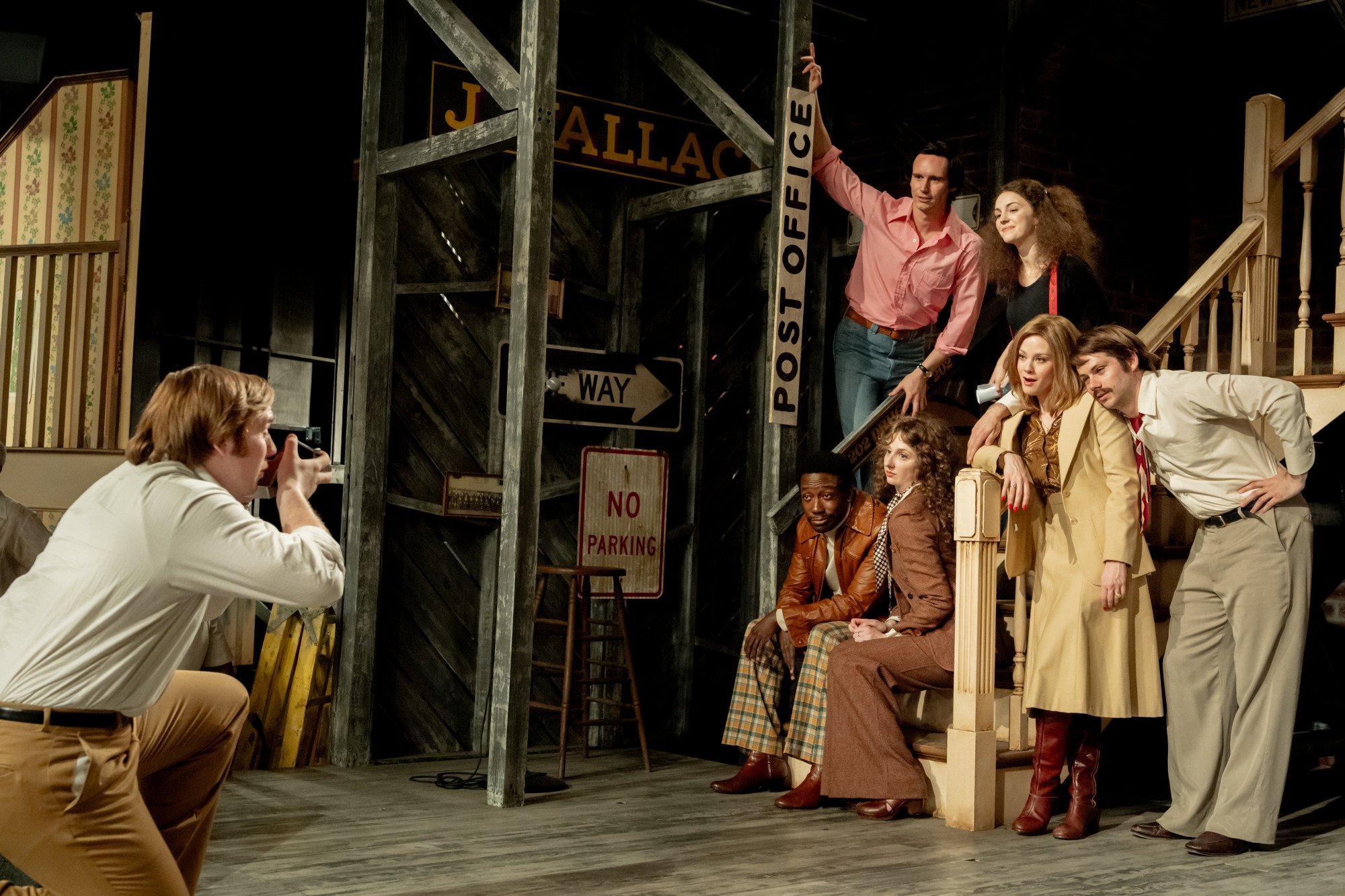Review: 'Rumours' is a deadpan and sometimes surreal satire of global diplomacy, as world leaders wander in the woods when a real crisis is upon them
The humor in “Rumours” is so dry that one should not approach it with an open flame, lest it burst into flames — which is actually something that happens in this oddball satire of modern diplomacy.
In a castle somewhere in Germany, a summit of tthe G7 is getting started. The leaders of the world’s leading democracies — the United Kingdom, France, Italy, Japan, Canada, the United States and the host country, Germany — are tasked with drafting a joint statement that will speak decisively, but not too controversially, to all nations about the ongoing crisis the world is facing.
It won’t escape the audience’s notice that none of these world leaders ever talk about what the crisis is. Instead, these world leaders more preoccupied about the process they should follow in drafting their joint communique — and the content-free verbiage they will put into their statement. The most interesting thing that happens on the castle grounds is an archaeological dig, where the experts have unearthed an ancient corpse of something called a “bog body,” from an era when leaders were sacrificed because they didn’t keep bad weather from destroying the crops.
As the summit’s first working dinner gets underway, in a gazebo without any aides, we start to see the personalities of the seven world leaders:
• The German chancellor, Hilda Orimann (Cate Blanchett), is laboring to be a welcoming host.
• The UK prime minister, Cardosa Dewindt (Nikki Amuka-Bird), is all business, her laptop at the ready.
• The American president, Edison Wolcott (Charles Dance), tells war stories and falls asleep a lot (and, for no adequately explored reason, has an English accent).
• The Italian prime minister, Antonio Lamorle (Rolando Ravello), is attending his first G7, and is happy to let others speak.
• The Japanese prime minister, Tatsuro Iwasaki (Takehiro Hira), says little, and appears smarter than the rest for that reason alone.
• The French president, Sylvain Broulez (Denis Ménochet), is happy to do all the talking.
• And the Canadian prime minster, Maxime Laplace (Roy Dupuis), is a charming rogue, and we’re led to believe had a one-night stand with the British P.M. at the last summit.
As the sun goes down, the seven leaders notice that they can’t reach their aides on their cellphones, and that everything around the gazebo has gone eerily quiet. At one point, Maxime leaves the group, and when Sylvain tries to find him, he runs back terrified. “I believe we’re in a crisis,” Sylvain gasps — a real one, not a geopolitical one — and these world leaders are at a loss what to do next.
The movie is directed by the Canadian surrealist Guy Maddin (“The Saddest Music in the World,” “Brand Upon the Brain!”) and his collaborators for the last decade, the brother team of Evan and Galen Johnson. What they depict, by way of Evan Johnson’s loopy script, is a group of world leaders forced by their unexpected circumstances to, as they used to say on MTV’s “The Real World,” stop being polite and start being real.
Since being real isn’t something these politicians do well, the attempts set them wandering into complete weirdness. At one point, as the leaders wander through the woods, they encounter two discoveries: A brain the size of a VW Beetle, and a representative from the EU, Celestine Sproul (Alicia Vikander), who has come under the brain’s influence — and has reverted to making apocalyptic pronouncements in Swedish.
As the evening devolves into strangeness, viewers get to enjoy a deadpan ensemble of actors playing world leaders accustomed to acting like they’re in charge. The standouts among the group are Blanche,tt’s unflappable German, Amuka-Bird’s tightly wound Brit, and Dance’s blustering American — and, yes their personality quirks seem to be meant to mirror the stereotypical traits of the countries they represent, with varying degrees of success.
Can I pretend I understood what was happening in “Rumours” from start to finish. No, I cannot — especially with that ending. I can recognize that Maddin and the Johnsons are saying something profound and biting about the hollow contradictions of world leaders, people willing to sacrifice anything for global unity — anything, that is, except for their next election back home.
——
‘Rumours’
★★★
Opens Friday, October 18, at the Broadway Centre Cinemas (Salt Lake City). Rated R for some sexual content/partial nudity and violent content. Running time: 104 minutes.







